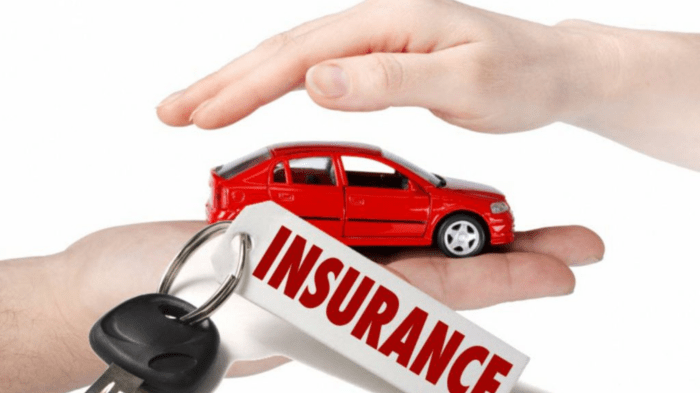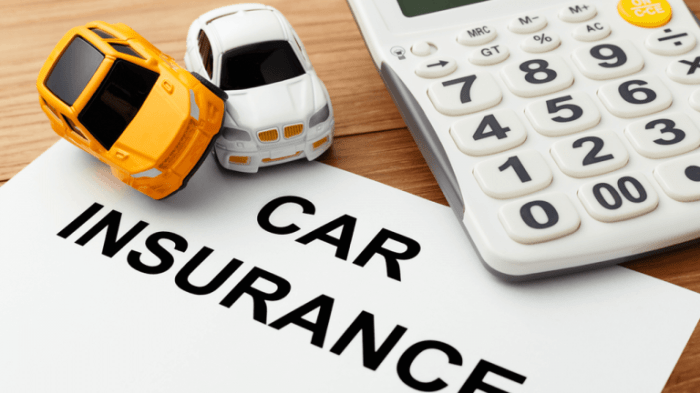Understanding your car insurance premium is crucial for responsible vehicle ownership. This seemingly simple term, “premium,” often leaves drivers puzzled. It’s more than just a monthly payment; it’s the price you pay for the financial protection your insurance policy provides. This guide unravels the mysteries behind car insurance premiums, explaining how they’re calculated, the factors influencing their cost, and strategies to potentially lower your payments.
We’ll explore the intricate relationship between your driving habits, vehicle type, location, and the ultimate cost of your insurance. Think of it as a personalized risk assessment, where your driving record and other factors contribute to a unique premium tailored to your circumstances. By understanding this process, you can become a more informed and savvy car insurance consumer.
Defining “Premium” in Car Insurance

In the world of car insurance, understanding the terminology is crucial for making informed decisions. One of the most fundamental terms you’ll encounter is “premium.” This seemingly simple word holds significant weight in your financial planning related to vehicle ownership.
A car insurance premium is essentially the amount of money you pay to your insurance company in exchange for their promise to cover certain costs associated with accidents or other covered events. Think of it as your regular contribution to a safety net. It’s the price you pay for the protection and peace of mind that insurance provides.
Analogy for Understanding Car Insurance Premiums
Imagine you’re subscribing to a gym membership. You pay a monthly fee (your premium) to access the facilities and services offered. Similarly, with car insurance, your premium grants you access to the insurer’s financial resources in case of an accident or other covered incident. The more comprehensive the coverage, the higher the monthly fee (premium) tends to be.
Comparison of Premium Payments with Other Recurring Expenses
To better understand the context of your car insurance premium, let’s compare it to other regular expenses you might have. The following table illustrates this comparison, highlighting the monthly cost, frequency, and purpose of each expense.
| Expense Type | Monthly Cost (Example) | Frequency | Purpose |
|---|---|---|---|
| Car Insurance Premium | $150 | Monthly | Protection against accidents and damages |
| Rent/Mortgage | $1200 | Monthly | Housing |
| Utilities (Electricity, Water, Gas) | $200 | Monthly | Essential services |
| Groceries | $500 | Monthly | Food and sustenance |
Factors Influencing Car Insurance Premiums

Several interconnected factors influence the cost of your car insurance premium. Insurance companies use a complex algorithm to assess risk, and the price you pay reflects their assessment of how likely you are to file a claim. This assessment considers a wide range of variables, from your driving record to the type of vehicle you own.
Driving History
Your driving history significantly impacts your car insurance premium. A clean driving record, free of accidents and traffic violations, generally results in lower premiums. Conversely, accidents and tickets increase your risk profile, leading to higher premiums. The severity of the accident or violation also plays a crucial role; a serious accident with injuries will have a more substantial effect than a minor fender bender. Multiple incidents within a short period will likely result in even higher premiums. For example, a driver with two at-fault accidents and three speeding tickets in the past three years would expect significantly higher premiums compared to a driver with a spotless record.
Age, Gender, and Location
Age, gender, and location are all demographic factors that influence insurance premiums. Statistically, younger drivers are considered higher risk due to inexperience and potentially riskier driving habits. Older drivers, on the other hand, often benefit from lower premiums due to their generally safer driving records. Gender also plays a role, although the impact varies by region and insurer. Location significantly impacts premiums due to factors such as crime rates, accident frequency, and the cost of vehicle repairs in a given area. Urban areas, for instance, tend to have higher premiums than rural areas due to higher risk factors.
Types of Car Insurance Coverage
The type of car insurance coverage you choose directly impacts your premium. Different coverages offer varying levels of protection and, consequently, different price points.
- Liability Coverage: This is usually the most basic and least expensive type of coverage. It covers damages or injuries you cause to others in an accident. The cost depends on the limits of liability you choose (e.g., $100,000, $250,000, $500,000).
- Collision Coverage: This covers damage to your vehicle in an accident, regardless of fault. It’s typically more expensive than liability coverage but offers greater protection.
- Comprehensive Coverage: This covers damage to your vehicle from events other than accidents, such as theft, vandalism, or natural disasters. It’s often more expensive than collision coverage, adding to the overall premium.
Choosing higher coverage limits for liability, collision, or comprehensive insurance will generally increase your premium, but it also provides greater financial protection in the event of an accident or loss. Conversely, opting for lower coverage limits will reduce your premium but also limits the amount of financial protection you receive.
Last Recap

In conclusion, understanding your car insurance premium is key to managing your vehicle expenses effectively. While the calculation process might seem complex, grasping the fundamental factors—driving history, location, coverage type, and risk assessment—empowers you to make informed decisions. By proactively managing these factors and exploring available discounts, you can potentially lower your premiums and secure the financial protection you need without unnecessary expense. Remember, proactive driving habits and informed choices contribute significantly to a lower premium and greater peace of mind.
Key Questions Answered
What happens if I don’t pay my car insurance premium?
Failure to pay your premium can result in policy cancellation, leaving you without coverage and potentially facing legal consequences if involved in an accident.
Can I change my car insurance premium payment frequency?
Many insurers offer flexibility in payment frequency, allowing you to choose between monthly, quarterly, or annual payments. Contact your insurer to explore your options.
How often are car insurance premiums reviewed?
Premium reviews typically occur annually, but adjustments might be made based on changes in your circumstances, such as a driving violation or a change in your vehicle.
What is a lapse in car insurance coverage?
A lapse occurs when your policy expires and isn’t renewed, leaving a period without active coverage. This can negatively impact your insurance history and future rates.